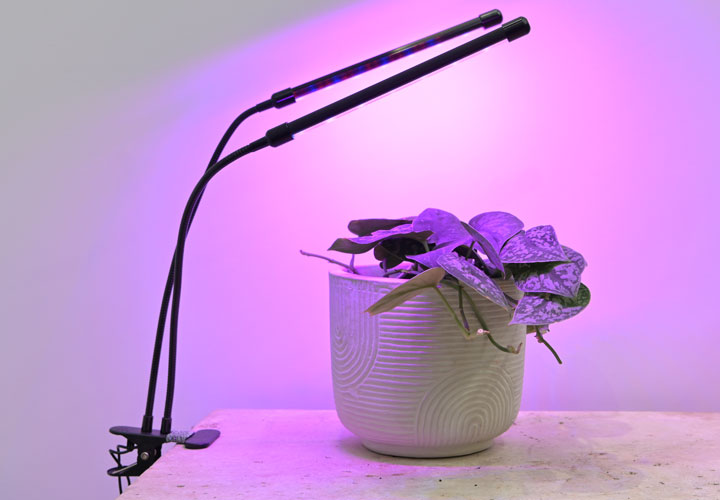The ultimate light guide: how to choose the best indoor lighting for plants
Understanding light needs is simple enough outdoors, but it can be a struggle to understand indoors. All plants, even those sold as ‘indoor’ plants, need light to grow and thrive. Indoors, light reduces the further you are from a window. Window dressings such as blinds and curtains (even sheer ones!) also reduce light levels, as do shelves where plants are displayed on stands or against a wall. If you're wondering how to choose the best indoor lighting for plants, we've got some handy hints.
The best lighting for indoor plants
The best light is likely to stream through north-facing windows, as these windows get maximum sun all day. Bright skylights can also provide high levels of light. Windows that face east get morning sun, and those that face west get western sun in the afternoons, which can often be very hot in summer. South-facing windows get little or no direct light. Identify the best locations for indoor plants before you spend a lot of money buying plants for your home.
An easy way to assess the brightness of the natural light is to hold your hand over a piece of white paper placed where you want your plant to go. If your hand casts a strong, dark shadow, the light should be bright enough for a plant. Remember to check light levels at different times of the day and also when there’s a change of seasons.
Give indoor plants the brightest light you can, rotating them regularly (for example, turning pots once a week by a quarter of a turn) to ensure that all parts of the plant get bright light. The suitability of plants to indoor light levels will be outlined on the plant label. Plants that grow best outside in full sun don’t adapt well to being brought indoors for more than a day or two. All indoor plants benefit from being rested outdoors in a sheltered spot from time to time, and particularly if they are showing signs of stress – such as leaf damage or pests.

Left: this fiddle leaf fig receives bright sunlight from the adjacent window, but is positioned far enough away to prevent sunburn. Right: This monstera is positioned on a staircase behind a wall, and likely receives low levels of natural light.
How light affects plant growth
While it is important to give plants bright light indoors, it is also important that the light isn’t too strong. Most plants sold as indoor plants grow naturally in low light levels such as under trees in jungles, which equate to a brightly lit room. During the middle of the day in summer, the light through a window may be too hot. Conversely, as the weather cools during autumn and winter, the area beside a window can be very cold, especially overnight. It is important to balance light and temperature. Plants may need to be moved away from cold windows in winter, or the window may need to be insulated – for example, with a sheer curtain - to keep the plant warm and maintain its light needs.
Where light levels are low, technology can help to improve growing conditions. Grow lights (lights that emit a specific spectrum that assists plant growth) are available and are easy to set up to provide plants with extra light. These can allow plants to grow in spots which would normally not be bright enough for plants. Urban Plant Growers is a range of grow lights for indoor plants that is available at Flower Power.

Grow lights can be a useful investment if you don't have a lot of natural light.
Indoor lighting terms explained
Seen the below terms on an indoor plant label, but not entirely sure what they mean? Let us help you out.
- Direct indoor sun refers to sunlight shining onto a plant through a window. While this is strong light, it may also cause burning and may not last very long. Plants may need to be moved slightly away from direct sun to avoid leaf damage. Direct sun in the early morning is usually safe for plants.
- High indoor natural light (indirect light) refers to areas that are brightly lit by light that enters a room from large windows, skylights or from multiple windows (for example a room with both east and north-facing windows). Most plants will do well in this type of light.
- Low indoor natural lighting (indirect light) This type of natural lighting would be experienced in areas that are away from windows or where windows are small but still illuminated. Areas with diffused natural light such as a bathroom also have low indoor natural lighting. Ferns usually do well in low indoor natural light. For more advice on growing indoor plants in low light areas, check out this article.

